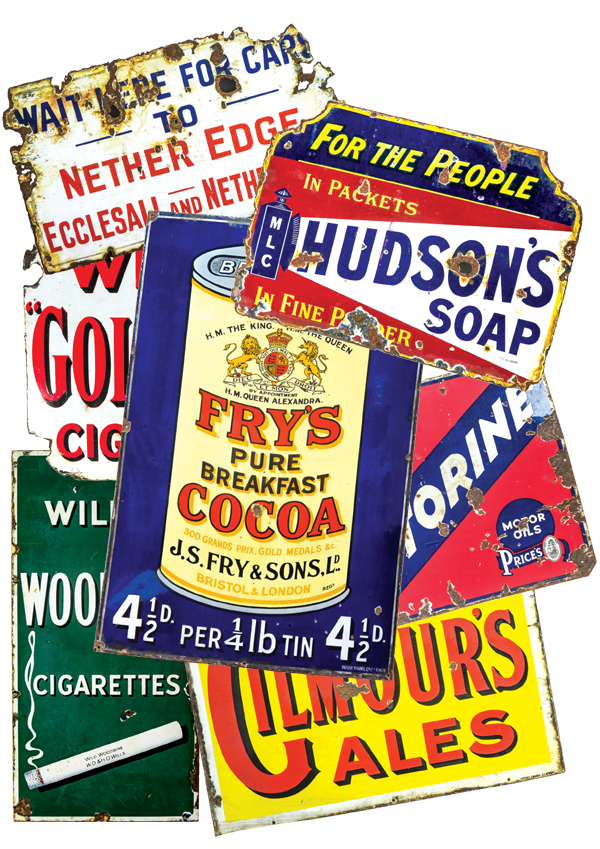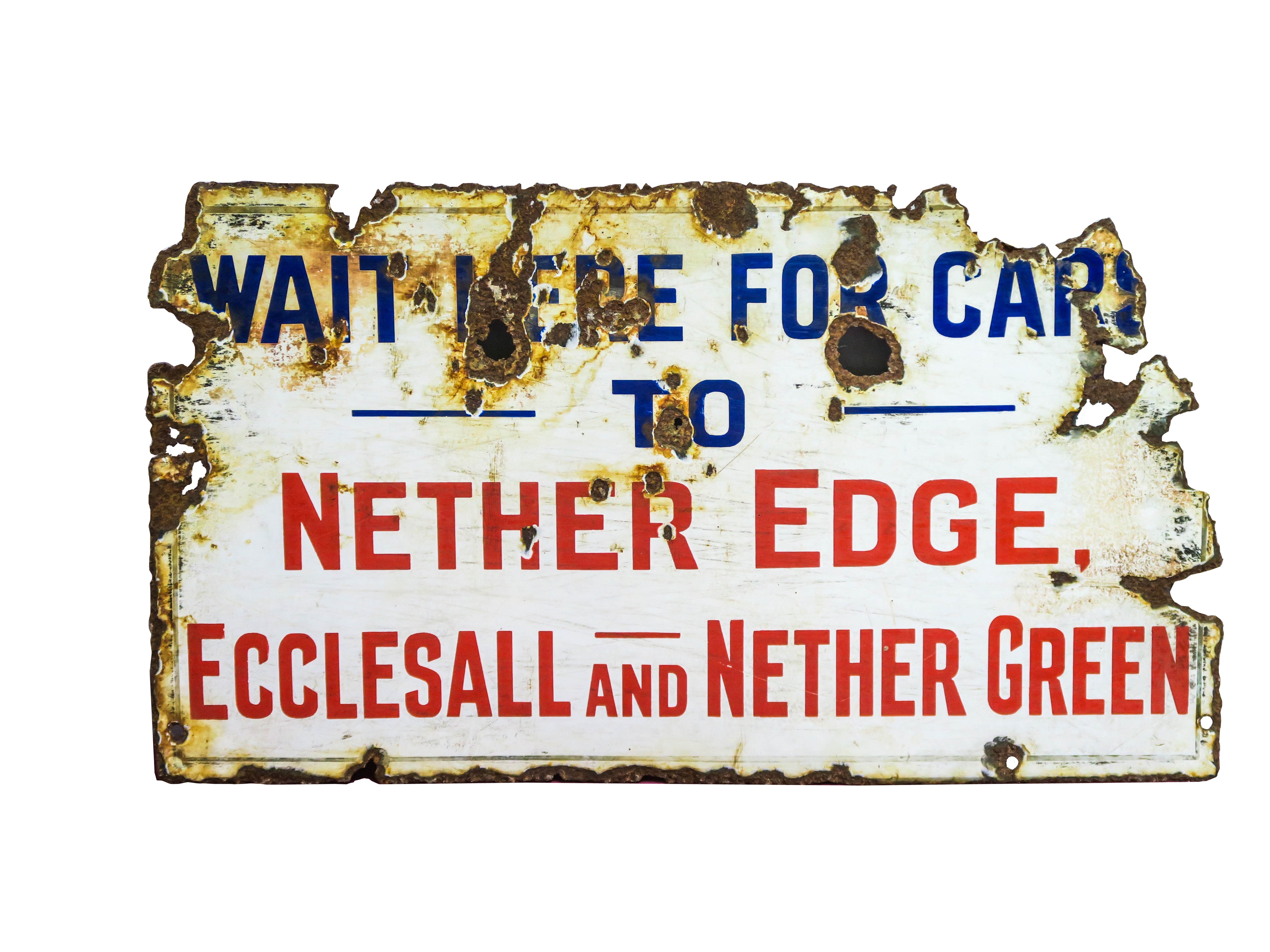Enamel Advertising Signs
Enamel Signs originated Continental Europe in the early 1800’s and were a means of advertising
04/07/2024 Blog
Enamel advertising signs are always popular in auction and we had some great examples in our last Fine Art sale with the highlight a Fry’s Cocoa sign on a rare green ground selling for £1,600.
Enamel Signs originated Continental Europe in the early 1800’s and were a means of advertising things such as services, food, petrol and other goods. They could be seen in many different locations such as on buildings, trams, railway stations and often streets were lined with each individual building having their own advertising signs.

The first commercial production of enamel signs began in the UK in Birmingham
when Benjamin Baugh patented the process for producing signage named vitreous enamelling in 1859 at his Salt’s Patent Enamel Works in Bradford Street. The process is a method of fusing porcelain in the form of powdered glass poured onto rolled iron plates (or later steel plates) whereby different layers of colours were added to the initial base coat colour, the lettering intricately hand stencilled. The signs were then heated to an extremely high temperature and as the metal becomes porous it allows the liquid glass to seep into the openings fusing the structure together. This process allows the finished product to be weatherproof, durable, vibrant, and attractive. For that little bit of extra durability occasionally the signs were enamelled on the rear also.
In the later 19th century, the industrial heartlands of the midlands became a hub of enterprising producers who were manufacturing signs in their thousands. With approximately 15 manufactures including Imperial Enamel, Stocal Enamels Ltd of Burton, JA Jordan & Sons Ltd and the Falkirk Iron Company many faded away as quick as they appeared making some signs significantly more collectable than others.

Moving through to the early 20th century and a mass influx of transportation and the growing presence of motor cars meant that businesses and retailers required better branding and better advertising. By the 1920’s well known brands had adorned the walls of commercial premises with signs advertising a wide range of products from chocolate, soap, paints, milk, polish and even vegetable seeds. Competition meant that one sign always had to be better than the next with eye-catching visuals and simplistic designs. However production costs were high as every colour had to be fired separately so the signs tended to stay in situ for many years.
By the 1950’s tin was used as a cheaper alternative to enamel advertising signs shortly followed by aluminium as it was lightweight, very durable and easy to put up.
Today there is a huge collector’s market for signs. Why not collect a particular genre or brand. As always try and buy pieces in good condition, a rare brand or those in multiple colours as these will be rarer examples.
People from all ages can enjoy the pieces whether it be for sentimental values, that trip down memory lane or for a new modern house to give it some colour and a focal point.